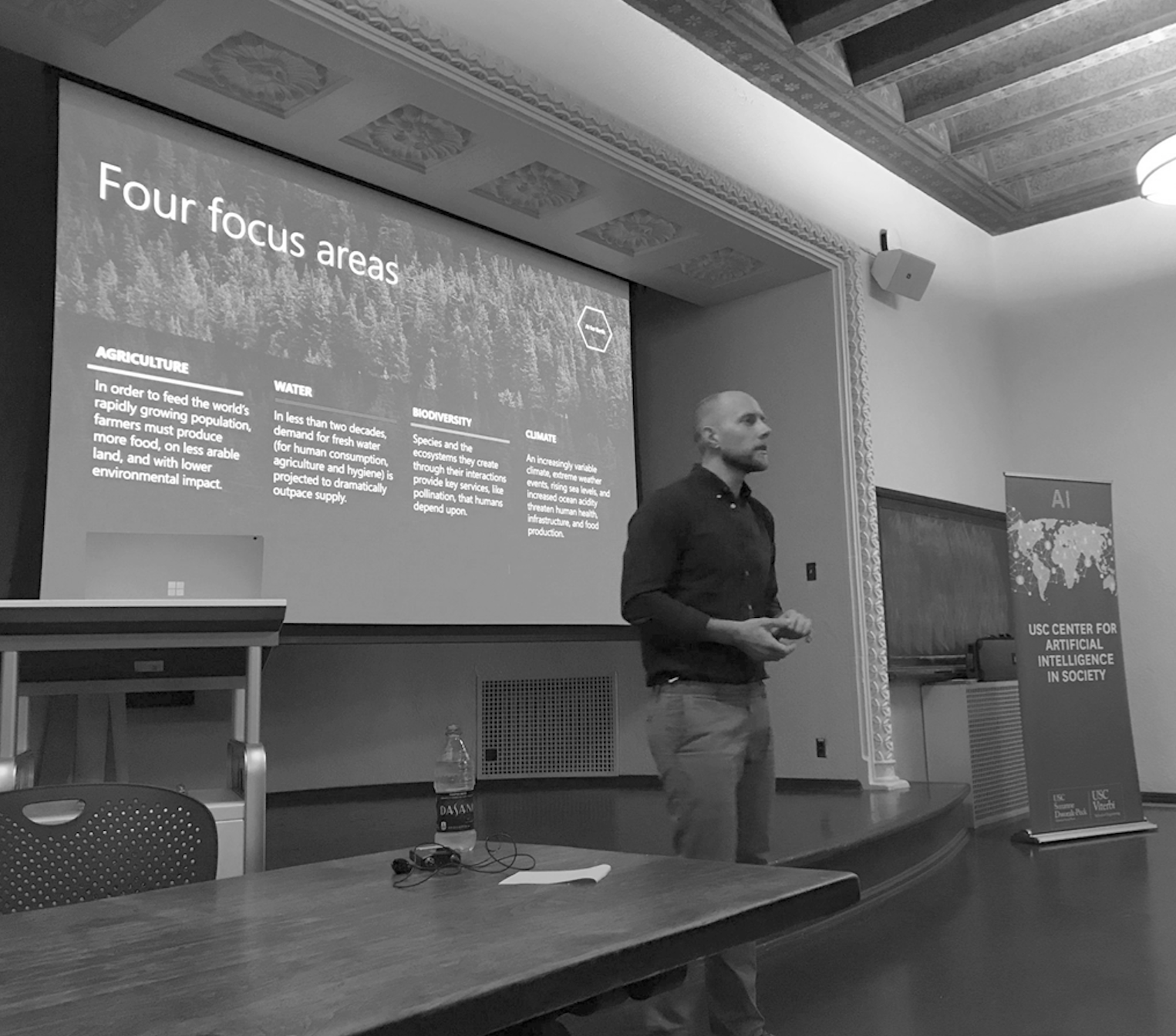Center for Artificial Intelligence forms new partnership with Microsoft
Flying across the horizons of African and Asian forests, drones created through a collaboration between the USC Center for Artificial Intelligence in Society and Microsoft operate with the intent of spotting poaching hunters.

Lucas Joppa, chief enviornmental scientist for Microsoft research, spoke to students at the Center for Artificial Intelligence in Society. Photo courtesy of USC Center for Artificial Intelligence in Society.
According to USC computer science professor Milind Tambe, poaching around the world is not easily detectable, but with recent advancements in artificial intelligence technology, wildlife conservation efforts are improving.
USC CAIS announced that it is initiating a new collaboration with Microsoft in AI for Earth, a program intended to encourage AI wildlife conservation research and provide student internships, on Jan. 8.
USC CAIS was founded in August 2016 by Tambe and Eric Rice, an associate professor of social work. According to Tambe, Microsoft and USC CAIS established research relations in the past for several years, and the collaboration has now escalated into a partnership.
“What this partnership implies is that we have essentially supported summer research, so other researchers can participate on the conservation research that we have been doing here,” Tambe said. “So we are applying for summer fellowships for Ph.D. students, [postdoctoral students], assistant professors and there are postdoctoral research opportunities.”
The Microsoft Green Blog stated that USC CAIS has done extensive collaboration with Microsoft on multiple environmental AI projects. Past projects included game theory research, machine learning and AI development to better wildlife conditions.
One of the major focuses of this joint wildlife conservation effort involves poaching prevention. USC CAIS and Microsoft have expanded their AI implementations beyond local areas and into Africa and Asia.
According to Tambe, SPOT, otherwise known as the Systematic Poacher Detector is one of many collaborations. This project flies video-taking drones in Africa to detect poaching activities in forests. These drones demonstrate the benefits of AI machines, since they use automatic detection instead of manual labor.
“We can let appropriate authorities know that there are some people walking in the forest, who are not supposed to be there,” Tambe said. “That would allow us to intercept the poachers and stop them from getting into the park and hunting animals.”
The Microsoft Green Blog also expressed interest in supporting early career research, building and maintaining canonical environmental datasets and translating findings to daily applications with USC researchers.
Given that there is a high level of student interest in AI environmental conservation, CAIS aims to be more present at USC by publicizing the collaboration with Microsoft.
CAIS plans to host more on-campus seminars for students with lectures given by speakers from Microsoft. Additionally, directors of the organization intend to visit Microsoft with students to conduct research firsthand.
“Our students are so keen on this topic that we haven’t had an issue on trying to recruit people to do this work … [but] many students don’t know that this is going on,” Tambe said.
